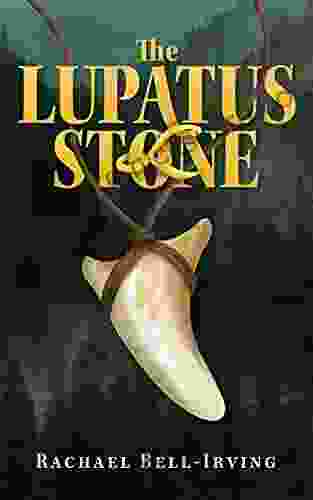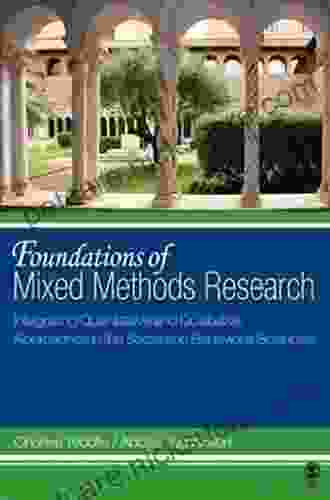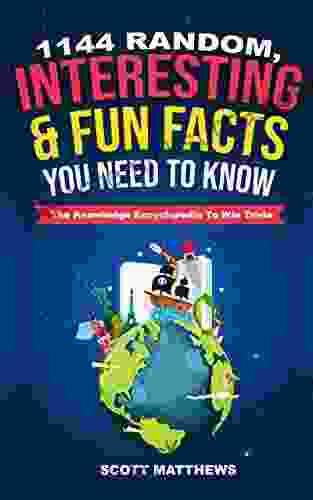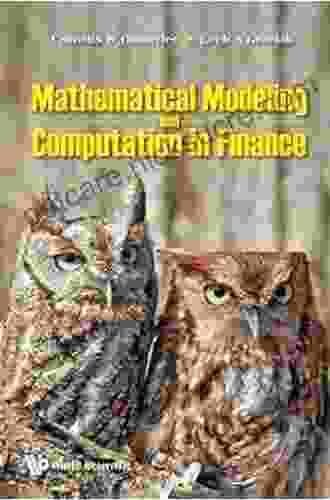Foundations of Mixed Methods Research: A Comprehensive Guide

Mixed methods research is a powerful approach that combines both quantitative and qualitative research methods to gain a more comprehensive understanding of a research question. This method is especially valuable when the research question is complex and requires both a quantitative analysis of data and a qualitative interpretation of experiences. In this article, we will explore the foundations of mixed methods research, including its history, key concepts, and different types of mixed methods designs. We will also discuss the advantages and challenges of using mixed methods research and provide tips for conducting a mixed methods research study.
Historical Evolution of Mixed Methods Research
The roots of mixed methods research can be traced back to the early 19th century, when researchers began to combine different methods to gain a more comprehensive understanding of social phenomena. However, it was not until the late 20th century that mixed methods research became widely accepted as a legitimate research approach. In 1994, the journal Mixed Methods Research was founded, which helped to establish the field as a distinct area of research.
4.4 out of 5
| Language | : | English |
| File size | : | 46053 KB |
| Text-to-Speech | : | Enabled |
| Screen Reader | : | Supported |
| Enhanced typesetting | : | Enabled |
| Word Wise | : | Enabled |
| Print length | : | 472 pages |
Key Concepts in Mixed Methods Research
Mixed methods research is based on the idea that combining different research methods can produce a more comprehensive understanding of a research question than using a single method. This approach is based on the following key concepts:
* Triangulation: Triangulation is a key concept in mixed methods research that involves using multiple methods to collect data on the same research question. By triangulating data sources, researchers can ensure that their findings are consistent across different methods and that their s are not influenced by a single method. * Complementarity: Complementarity refers to the idea that different research methods can provide complementary information on a research question. For example, a quantitative method can provide data on the prevalence of a behavior, while a qualitative method can provide data on the reasons why people engage in that behavior. By combining these methods, researchers can gain a more complete understanding of the research question. * Integration: Integration refers to the process of combining the findings from different research methods into a single coherent interpretation. This process can be challenging, as it requires researchers to be able to see the connections between the different types of data and to develop a theoretical framework that explains the findings.
Types of Mixed Methods Designs
There are many different types of mixed methods designs, each with its own strengths and weaknesses. Some of the most common types include:
* Concurrent mixed methods designs: In a concurrent mixed methods design, data is collected from both quantitative and qualitative methods at the same time. This approach is often used to obtain a more complete understanding of the research question from the beginning of the study. * Sequential mixed methods designs: In a sequential mixed methods design, data is collected from one method at a time. This approach is often used when the researcher wants to use the findings from the first method to inform the design of the second method. * Nested mixed methods designs: In a nested mixed methods design, one method is nested within the other. This approach is often used when the researcher wants to collect data from one method on a specific subset of the sample.
Advantages of Mixed Methods Research
Mixed methods research offers several advantages over using a single research method:
* Increased understanding: By combining different research methods, mixed methods research can provide a more comprehensive understanding of a research question than using a single method. This is because different methods can provide different perspectives on the research question and can help to identify new insights. * Enhanced credibility: By triangulating data sources, mixed methods research can help to enhance the credibility of the findings. This is because the findings are less likely to be influenced by a single method and are more likely to be supported by evidence from multiple sources. * Greater generalizability: By using a combination of methods, mixed methods research can help to generalize the findings to a wider population. This is because the findings are less likely to be influenced by the specific characteristics of the sample used in the study.
Challenges of Mixed Methods Research
While mixed methods research offers many advantages, there are also some challenges to using this approach:
* Complexity: Mixed methods research is more complex than using a single research method. This is because it requires researchers to be able to design and implement both quantitative and qualitative methods and to integrate the findings from both methods. * Cost: Mixed methods research can be more expensive than using a single research method. This is because it requires more time and resources to collect and analyze data from multiple methods. * Time: Mixed methods research can take longer to complete than using a single research method. This is because it requires researchers to design and implement both quantitative and qualitative methods and to integrate the findings from both methods.
Tips for Conducting Mixed Methods Research
If you are considering conducting a mixed methods research study, there are a few tips that you should keep in mind:
* Start with a clear research question: The first step is to start with a clear research question. This will help you to determine the most appropriate research methods to use and will also help you to stay focused throughout the research process. * Choose the right research methods: The next step is to choose the right research methods for your study. This will depend on the research question and the type of data you need to collect. * Design a rigorous research design: Once you have chosen your research methods, you need to design a rigorous research design. This will ensure that your study is valid and reliable. * Collect and analyze your data carefully: Once you have designed your research design, you need to collect and analyze your data carefully. This will ensure that you get the most accurate and reliable results possible. * Integrate your findings: The final step is to integrate your findings. This can be a challenging process, but it is essential for producing a coherent and meaningful research report.
Mixed methods research is a powerful approach that can provide a more comprehensive understanding of a research question than using a single research method. However, it is important to be aware of the challenges involved in using this approach and to take steps to mitigate these challenges. By following the tips in this article, you can increase your chances of conducting a successful mixed methods research study.
4.4 out of 5
| Language | : | English |
| File size | : | 46053 KB |
| Text-to-Speech | : | Enabled |
| Screen Reader | : | Supported |
| Enhanced typesetting | : | Enabled |
| Word Wise | : | Enabled |
| Print length | : | 472 pages |
Do you want to contribute by writing guest posts on this blog?
Please contact us and send us a resume of previous articles that you have written.
 Fiction
Fiction Non Fiction
Non Fiction Romance
Romance Mystery
Mystery Thriller
Thriller SciFi
SciFi Fantasy
Fantasy Horror
Horror Biography
Biography Selfhelp
Selfhelp Business
Business History
History Classics
Classics Poetry
Poetry Childrens
Childrens Young Adult
Young Adult Educational
Educational Cooking
Cooking Travel
Travel Lifestyle
Lifestyle Spirituality
Spirituality Health
Health Fitness
Fitness Technology
Technology Science
Science Arts
Arts Crafts
Crafts DIY
DIY Gardening
Gardening Petcare
Petcare Guillermo Gonzalez
Guillermo Gonzalez Derek Rowntree
Derek Rowntree Jonathan Tarbox
Jonathan Tarbox Wolfgang Jank
Wolfgang Jank Ashley Stanford
Ashley Stanford Emily Chetkowski
Emily Chetkowski Forrest Willett
Forrest Willett Susan Alcorn
Susan Alcorn David Clark
David Clark Hannu Rajaniemi
Hannu Rajaniemi Jay Cassell
Jay Cassell Nancy Hendrickson
Nancy Hendrickson Alexandra Witze
Alexandra Witze Julie K Briggs
Julie K Briggs Brent E Turvey
Brent E Turvey Jeanne Oliver
Jeanne Oliver Hana Ali
Hana Ali Nicole Libin Phd
Nicole Libin Phd Joshua G Shifrin
Joshua G Shifrin Bud Hasert
Bud Hasert Matthew B Crawford
Matthew B Crawford Otto Toeplitz
Otto Toeplitz Stephen C Meyer
Stephen C Meyer D James Benton
D James Benton Botros Rizk
Botros Rizk Amita Jassi
Amita Jassi Lavinia Collins
Lavinia Collins Jon Young
Jon Young Mindfulness Hypnosis Academy
Mindfulness Hypnosis Academy Larry A Yff
Larry A Yff Knowledge Tree
Knowledge Tree Robert Oerter
Robert Oerter Sophie Kinsella
Sophie Kinsella Marisa Kanter
Marisa Kanter Perre Coleman Magness
Perre Coleman Magness Manjit Kumar
Manjit Kumar Gill Stewart
Gill Stewart Paul Gaskell
Paul Gaskell Rick Barba
Rick Barba Edward Marston
Edward Marston Brian Meier
Brian Meier Jeremy Lent
Jeremy Lent Ann Olga Koloski Ostrow
Ann Olga Koloski Ostrow David Weber
David Weber Mara Rutherford
Mara Rutherford Leslie Anthony
Leslie Anthony Daniel Scott
Daniel Scott The Lodge Company
The Lodge Company Robyn Hawkins
Robyn Hawkins Jack Newfield
Jack Newfield Robert Chu
Robert Chu Jo Bartlett
Jo Bartlett Elise Hennessy
Elise Hennessy 1st Edition Kindle Edition
1st Edition Kindle Edition Joachim Rossberg
Joachim Rossberg Mildred Council
Mildred Council Sanjay Sarma
Sanjay Sarma Desiree Trattles
Desiree Trattles Jamil Zaki
Jamil Zaki William E Glassley
William E Glassley Tillie Cole
Tillie Cole Alison Gopnik
Alison Gopnik Michael R Canfield
Michael R Canfield Jacob Stegenga
Jacob Stegenga Six Sisters Stuff
Six Sisters Stuff Ric Conrad
Ric Conrad Phil Mickelson
Phil Mickelson Janice K Ledford
Janice K Ledford Jay Carter
Jay Carter Paul Haddad
Paul Haddad Florence Nightingale
Florence Nightingale Jane Yeadon
Jane Yeadon Laura Prepon
Laura Prepon Traci Chee
Traci Chee Charles Fleming
Charles Fleming M L Buchman
M L Buchman Brent Warner
Brent Warner Christian Fader
Christian Fader Kaoru Sinozaki
Kaoru Sinozaki Bryn Huntpalmer
Bryn Huntpalmer Holly Hook
Holly Hook Nicholas J Saunders
Nicholas J Saunders Ivor Horton
Ivor Horton Gary E Schwartz
Gary E Schwartz Adam Rutherford Phd
Adam Rutherford Phd Ian Stewart
Ian Stewart Alexandra Kenin
Alexandra Kenin Gary M Schultheis
Gary M Schultheis Tom Chivers
Tom Chivers Glenda Green
Glenda Green Lou Nanne
Lou Nanne Jacqueline Carey
Jacqueline Carey Richard E Nisbett
Richard E Nisbett Jesse M Ehrenfeld
Jesse M Ehrenfeld Felicia Pizzonia
Felicia Pizzonia Chad Waterbury
Chad Waterbury Kara Goucher
Kara Goucher Elaine Heney
Elaine Heney Robyn Perry Worthington
Robyn Perry Worthington Elizabeth Heavey
Elizabeth Heavey James Proctor
James Proctor Lani Forbes
Lani Forbes Tim Hollister
Tim Hollister Chris Parsons
Chris Parsons Raven Morgaine
Raven Morgaine R K Agarwal
R K Agarwal Kyler Shumway
Kyler Shumway Matthew Dworak
Matthew Dworak 15th Edition Kindle Edition
15th Edition Kindle Edition Joseph Mercola
Joseph Mercola Ian Sample
Ian Sample Richard Pears
Richard Pears Paul Freedman
Paul Freedman 1st Ed 2020 Edition Kindle Edition
1st Ed 2020 Edition Kindle Edition Denis Dwyer
Denis Dwyer Steve Crawford
Steve Crawford Megan Sloan
Megan Sloan Helen Garabedian
Helen Garabedian H Lee Jones
H Lee Jones Jacob Gardner
Jacob Gardner Valerie Nash Chang
Valerie Nash Chang Lisa Marasco
Lisa Marasco Patricia G Lange
Patricia G Lange Harvey Penick
Harvey Penick Clark A Campbell
Clark A Campbell Tim Deroche
Tim Deroche Dan Robson
Dan Robson R I Chalmers
R I Chalmers Lenora Chu
Lenora Chu M Susan Lindee
M Susan Lindee Julie Angus
Julie Angus Monte Burch
Monte Burch Peter Heller
Peter Heller Loudell F Snow
Loudell F Snow Zachary Willey
Zachary Willey Leonard Sax
Leonard Sax David Fine
David Fine Peter Lightbown
Peter Lightbown Sally A Lipsky
Sally A Lipsky Helen Batten
Helen Batten Raichelle Carter
Raichelle Carter Rachel Reed
Rachel Reed Amanda Brooks
Amanda Brooks 1st Ed 2018 Edition Kindle Edition
1st Ed 2018 Edition Kindle Edition Joshua James
Joshua James Hafsah Faizal
Hafsah Faizal Nancy B Rapoport
Nancy B Rapoport Katie Singer
Katie Singer Bob Allcorn
Bob Allcorn George Mount
George Mount Bruce Brown
Bruce Brown Intelligent
Intelligent Gail Buckland
Gail Buckland David Wolff
David Wolff Felicity Cloake
Felicity Cloake Lawrence T Friedhoff
Lawrence T Friedhoff Michael Archer
Michael Archer S Elia
S Elia Alice Roberts
Alice Roberts Nick Morrison
Nick Morrison House Of Talent
House Of Talent 6th Edition Kindle Edition
6th Edition Kindle Edition Lindsey Bliss
Lindsey Bliss Harold Simmons
Harold Simmons Karyn Garvin
Karyn Garvin Edward A Bell
Edward A Bell Harry Fisch
Harry Fisch Jamie Dorobek
Jamie Dorobek Robert Milner
Robert Milner Vikas Bhushan
Vikas Bhushan Lynne Tolley
Lynne Tolley Cal Peternell
Cal Peternell Geoff Powter
Geoff Powter Janice Hudson
Janice Hudson Teddy Atlas
Teddy Atlas James M Tabor
James M Tabor Ron Larson
Ron Larson Christian Straube
Christian Straube Doug Degrood
Doug Degrood Alex Hibbert
Alex Hibbert Lech A Grzelak
Lech A Grzelak Rosemary Ellen Guiley
Rosemary Ellen Guiley Karina Manta
Karina Manta Evelyn Raab
Evelyn Raab Sharon Wilkins
Sharon Wilkins Dana Trentini
Dana Trentini Dinah Bucholz
Dinah Bucholz Didier Reiss
Didier Reiss Mike Chappell
Mike Chappell Susan Ludington Hoe
Susan Ludington Hoe Sharon Copeland
Sharon Copeland Ivana Bajic Hajdukovic
Ivana Bajic Hajdukovic Jim Baggott
Jim Baggott Carmen Acevedo Butcher
Carmen Acevedo Butcher Kathy Farrokhzad
Kathy Farrokhzad Irene Spencer
Irene Spencer Diana Papaioannou
Diana Papaioannou Mark Vee John
Mark Vee John Stanley Vast
Stanley Vast Sandra Uwiringiyimana
Sandra Uwiringiyimana David Kahn
David Kahn Lori Bregman
Lori Bregman John L Havlin
John L Havlin Alan Agresti
Alan Agresti Guy Harrison
Guy Harrison Nicole Zasowski
Nicole Zasowski Eryk Lewinson
Eryk Lewinson Taran Matharu
Taran Matharu Leonie Mack
Leonie Mack Randall M Packard
Randall M Packard 1st Ed 2019 Edition Kindle Edition
1st Ed 2019 Edition Kindle Edition Barry Ord Clarke
Barry Ord Clarke Adeline Yen Mah
Adeline Yen Mah Kathleen Buckstaff
Kathleen Buckstaff Ejike Ifeanyichukwu
Ejike Ifeanyichukwu S K Gupta
S K Gupta Lei Wang
Lei Wang Ruth Ware
Ruth Ware Jeff Benedict
Jeff Benedict Travis Senzaki
Travis Senzaki Bradmd
Bradmd Wendy Sullivan
Wendy Sullivan Kajal Gupta
Kajal Gupta Egerton Ryerson Young
Egerton Ryerson Young Claire Dunn
Claire Dunn Daisaku Ikeda
Daisaku Ikeda Ewan Mcgregor
Ewan Mcgregor Pat Manley
Pat Manley Terry Pratchett
Terry Pratchett My Daily German
My Daily German Alan Greenfield
Alan Greenfield Caroline Fidanza
Caroline Fidanza Mark Santino
Mark Santino Steve Garratt
Steve Garratt Yaron Seidman
Yaron Seidman Karen L Cox
Karen L Cox Erin Miller
Erin Miller Judith Warner
Judith Warner Tamonya Sands
Tamonya Sands Gerald Beaudry
Gerald Beaudry Paul Annacone
Paul Annacone Bill Douglas
Bill Douglas Bill Rodgers
Bill Rodgers Raymond Arsenault
Raymond Arsenault 1st Ed 2021 Edition Kindle Edition
1st Ed 2021 Edition Kindle Edition Teri Tom
Teri Tom Spire Study System
Spire Study System Francis L Macrina
Francis L Macrina Michelle Damiani
Michelle Damiani Christopher Carter
Christopher Carter Chip Ingram
Chip Ingram Launi Meili
Launi Meili David Barrett
David Barrett Ashlee Kasten
Ashlee Kasten Karl Rehn
Karl Rehn Andrew Solomon
Andrew Solomon Julia Rutland
Julia Rutland Keith Bowden
Keith Bowden Janet Malcolm
Janet Malcolm Shalini Shankar
Shalini Shankar Hesam Nemounehkhah
Hesam Nemounehkhah Shane Benzie
Shane Benzie Christine E Sleeter
Christine E Sleeter Anne Polli
Anne Polli Neil Sagebiel
Neil Sagebiel Amanda Claridge
Amanda Claridge Karen Kovacs
Karen Kovacs Brian Fagan
Brian Fagan Asti Hustvedt
Asti Hustvedt Timothy R Pauketat
Timothy R Pauketat Shane Jones
Shane Jones Carol Lynn Mckibben
Carol Lynn Mckibben Andrea Olson
Andrea Olson Pam Vredevelt
Pam Vredevelt Erfun Geula
Erfun Geula Alan Naldrett
Alan Naldrett Latham Thomas
Latham Thomas Samuel Owedyk
Samuel Owedyk Cathy Raubenheimer
Cathy Raubenheimer Kay Kennedy
Kay Kennedy Matthew Harffy
Matthew Harffy Alexandre Paiva
Alexandre Paiva Michael Borenstein
Michael Borenstein R J Vickers
R J Vickers Bob Chandler
Bob Chandler Taylor Fontenot
Taylor Fontenot Derald Wing Sue
Derald Wing Sue Skylar Kergil
Skylar Kergil Jody Morse
Jody Morse Rollo Tomassi
Rollo Tomassi Ali Psiuk
Ali Psiuk Jerome Rand
Jerome Rand Robert Lomas
Robert Lomas Timothy Dickeson
Timothy Dickeson Norman Delgado
Norman Delgado Liz Thomas
Liz Thomas Phyllis Franklin
Phyllis Franklin 1st Ed 2017 Edition Kindle Edition
1st Ed 2017 Edition Kindle Edition David I Spivak
David I Spivak Kev Reynolds
Kev Reynolds Patricia B Mcconnell
Patricia B Mcconnell Daniel Todd Gilbert
Daniel Todd Gilbert Vaclav Smil
Vaclav Smil Diane H Tracey
Diane H Tracey Arny Alberts
Arny Alberts Mae Ilami Onyekwum
Mae Ilami Onyekwum Natsuki Takaya
Natsuki Takaya Modestus Anabaraonye
Modestus Anabaraonye Robert Irwin
Robert Irwin Adam Cesare
Adam Cesare Richard Hofstadter
Richard Hofstadter Andy Kirkpatrick
Andy Kirkpatrick Jandy Nelson
Jandy Nelson Morten H Christiansen
Morten H Christiansen Joanne Calderwood
Joanne Calderwood Fern Nichols
Fern Nichols Kiley Reid
Kiley Reid Sara Snow
Sara Snow Sarah Lawton
Sarah Lawton Brad Myers
Brad Myers Joan Ryan
Joan Ryan Scott Matthews
Scott Matthews Gerd Gigerenzer
Gerd Gigerenzer Aaron T Beck
Aaron T Beck Ronald York
Ronald York Emily Vikre
Emily Vikre Evy Poumpouras
Evy Poumpouras Rebecca Solnit
Rebecca Solnit Deborah Spungen
Deborah Spungen Robert Lanza
Robert Lanza Stacey Steinberg
Stacey Steinberg John S Farnam
John S Farnam Paul Johnson
Paul Johnson Darril Fosty
Darril Fosty Saroo Brierley
Saroo Brierley Larry Krieger
Larry Krieger Livy
Livy Robyn Ryle
Robyn Ryle Irina Szmelskyj
Irina Szmelskyj Heather A Smith
Heather A Smith Anton Angelov
Anton Angelov John Toussaint
John Toussaint Fletcher Dunn
Fletcher Dunn Ukay J Ekong
Ukay J Ekong Day Schildkret
Day Schildkret Belinia Xenrale
Belinia Xenrale Pete Magill
Pete Magill Nick Redfern
Nick Redfern Tyler Lansford
Tyler Lansford Janet Godwin
Janet Godwin Xiufeng Liu
Xiufeng Liu Suzy Hopkins
Suzy Hopkins Beryl Beare
Beryl Beare Monica Beyer
Monica Beyer Frank Wilczek
Frank Wilczek Rebekah Dodson
Rebekah Dodson Jason Sumner
Jason Sumner Roger Frampton
Roger Frampton Berkshire K Greene
Berkshire K Greene Will Nett
Will Nett Seth Tucker
Seth Tucker Carola Hein
Carola Hein Deborah T Goldberg
Deborah T Goldberg Thomas Lickona
Thomas Lickona James Adams
James Adams Daniel L Schacter
Daniel L Schacter Naomi Moriyama
Naomi Moriyama Kim Mack Rosenberg
Kim Mack Rosenberg Michael T Mcdermott
Michael T Mcdermott Ellie Marney
Ellie Marney Mark Seidenberg
Mark Seidenberg Mark Miller
Mark Miller Michael Ross
Michael Ross Natalia Molina
Natalia Molina Paul A Laviolette
Paul A Laviolette Bilingual Edition Kindle Edition
Bilingual Edition Kindle Edition Michele Smith
Michele Smith Rana Conway
Rana Conway Louise Warneford
Louise Warneford Andrea Sfiligoi
Andrea Sfiligoi John Small
John Small Duncan Hamilton
Duncan Hamilton Mark Lattanzi
Mark Lattanzi Ann Jackson
Ann Jackson Sean Fitz Gerald
Sean Fitz Gerald T M Mikita
T M Mikita Webb Chiles
Webb Chiles Mike Lanza
Mike Lanza Charlotte Eliopoulos
Charlotte Eliopoulos Jacob Cohen
Jacob Cohen Pam Jarvis
Pam Jarvis Jean Pierre De Caussade
Jean Pierre De Caussade Philip Moore
Philip Moore Carol Matsuzaki
Carol Matsuzaki Jill Heinerth
Jill Heinerth Diane Vaughan
Diane Vaughan Geraint Thomas
Geraint Thomas Orji Onyebuchi
Orji Onyebuchi Dr Mike Grevlos
Dr Mike Grevlos Christa Mackinnon
Christa Mackinnon Os Guinness
Os Guinness Eric Sevareid
Eric Sevareid Aron Ralston
Aron Ralston Chris J Ellis
Chris J Ellis Dylan Dethier
Dylan Dethier Arden Rose
Arden Rose 1st Ed 2016 Edition Kindle Edition
1st Ed 2016 Edition Kindle Edition Graham Priest
Graham Priest Ben Coates
Ben Coates Franz Boas
Franz Boas Philippa Langley
Philippa Langley Tadahiko Mizuno
Tadahiko Mizuno David Faulkner
David Faulkner Philip Coppens
Philip Coppens Mayim Bialik
Mayim Bialik Ray Mcnulty
Ray Mcnulty Jonathan Vaughters
Jonathan Vaughters Kim Dwinell
Kim Dwinell Larry Kaniut
Larry Kaniut Craig Clapper
Craig Clapper Mike Barrett
Mike Barrett Lars Anderson
Lars Anderson Andrew Evans
Andrew Evans Nathan D Lang Raad
Nathan D Lang Raad Russ Moorhouse
Russ Moorhouse John Vigor
John Vigor James Ragonnet
James Ragonnet Stephen R Lawhead
Stephen R Lawhead Estelle Maskame
Estelle Maskame Samantha Boardman
Samantha Boardman Christopher Hook
Christopher Hook J F Tamayo
J F Tamayo Anthony Haynes
Anthony Haynes Dorthe Berntsen
Dorthe Berntsen Gary Dierking
Gary Dierking Leona S Aiken
Leona S Aiken Robert Clifton Robinson
Robert Clifton Robinson Isa Herrera
Isa Herrera George Grimm
George Grimm Ben Rothenberg
Ben Rothenberg Peter Burns
Peter Burns Jeffrey S Saltz
Jeffrey S Saltz Sarah Thompson
Sarah Thompson Dk Publishing
Dk Publishing Lh Press
Lh Press David Roberts
David Roberts Jacqueline Corricelli
Jacqueline Corricelli Editions La Plume D Eros
Editions La Plume D Eros Cathy Hester Seckman
Cathy Hester Seckman Sarah A Reinhard
Sarah A Reinhard John T Cacioppo
John T Cacioppo Grace Liu
Grace Liu Bruce Chatwin
Bruce Chatwin Mambo Chita Tann
Mambo Chita Tann Disha Experts
Disha Experts Maureen Dempsey
Maureen Dempsey Daniel H Pink
Daniel H Pink Jean Yves Leloup
Jean Yves Leloup Lisa R Cohen
Lisa R Cohen Nageshwar Sah
Nageshwar Sah Michael Clarke
Michael Clarke Dierdre Wolownick Honnold
Dierdre Wolownick Honnold Laura Luther
Laura Luther Sarah A Clark
Sarah A Clark Mary Douglas
Mary Douglas Stephen Bodio
Stephen Bodio Burt L Standish
Burt L Standish Tim Powers
Tim Powers Chris Stringer
Chris Stringer Jareth Tempest
Jareth Tempest Wendy Higgins
Wendy Higgins Peter Hessler
Peter Hessler Keshia A Case
Keshia A Case Piotr Naskrecki
Piotr Naskrecki Maia Motley
Maia Motley Joyce L Vedral
Joyce L Vedral Amanda Kingloff
Amanda Kingloff Sara Saedi
Sara Saedi Alison Pray
Alison Pray Mike Bender
Mike Bender Rafael Nadal
Rafael Nadal Clifford E Trafzer
Clifford E Trafzer Robin Hobb
Robin Hobb Alice Waters
Alice Waters Joshua Darwin
Joshua Darwin Jamie Whyte
Jamie Whyte Wabun Wind
Wabun Wind Kristen Thrasher
Kristen Thrasher Anthony Burgess
Anthony Burgess Geoff Johns
Geoff Johns Michael Schiavone
Michael Schiavone Elizabeth Field
Elizabeth Field Elizabeth Becker
Elizabeth Becker Jeremy Bhandari
Jeremy Bhandari Rachael Bell Irving
Rachael Bell Irving Marva Collins
Marva Collins Linda L French
Linda L French Broccoli Lion
Broccoli Lion
Light bulbAdvertise smarter! Our strategic ad space ensures maximum exposure. Reserve your spot today!

 Charles BukowskiRace Talk and the Conspiracy of Silence: Unlocking the Power of Open Dialogue
Charles BukowskiRace Talk and the Conspiracy of Silence: Unlocking the Power of Open Dialogue Steven HayesFollow ·5.5k
Steven HayesFollow ·5.5k Dominic SimmonsFollow ·13.6k
Dominic SimmonsFollow ·13.6k Michael ChabonFollow ·12k
Michael ChabonFollow ·12k Bryan GrayFollow ·8.8k
Bryan GrayFollow ·8.8k Deacon BellFollow ·6.5k
Deacon BellFollow ·6.5k Clark BellFollow ·19.1k
Clark BellFollow ·19.1k Robbie CarterFollow ·17.2k
Robbie CarterFollow ·17.2k George R.R. MartinFollow ·19.9k
George R.R. MartinFollow ·19.9k

 Marcus Bell
Marcus BellThe Essential Guide to Angler Quick Reference: Your...
Embark on an unforgettable...

 Juan Butler
Juan ButlerThe Lupatus Stone: A Wicked Conjuring
The Lupatus Stone is a...

 Alvin Bell
Alvin BellUnveiling the Enchanting Memoirs of Lady Hyegyong: A...
In the annals of Korean...

 DeShawn Powell
DeShawn PowellAMC's Best Day Hikes in the Berkshires: Explore Majestic...
The Berkshires, a...

 Clark Campbell
Clark CampbellRewilding The Urban Soul: Reconnecting with Nature in the...
In the heart of sprawling metropolises, where...

 Cruz Simmons
Cruz SimmonsHow to Find Your Family History on a Genealogy Website: A...
Delving into the...
4.4 out of 5
| Language | : | English |
| File size | : | 46053 KB |
| Text-to-Speech | : | Enabled |
| Screen Reader | : | Supported |
| Enhanced typesetting | : | Enabled |
| Word Wise | : | Enabled |
| Print length | : | 472 pages |










